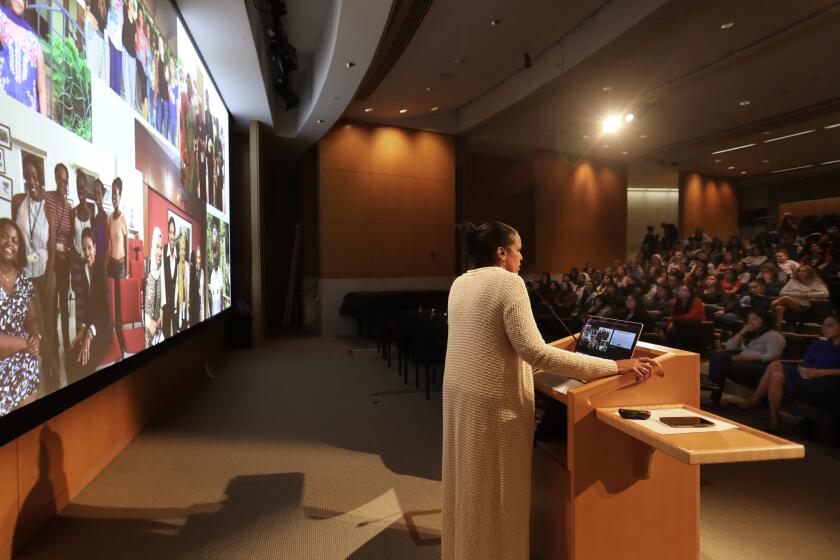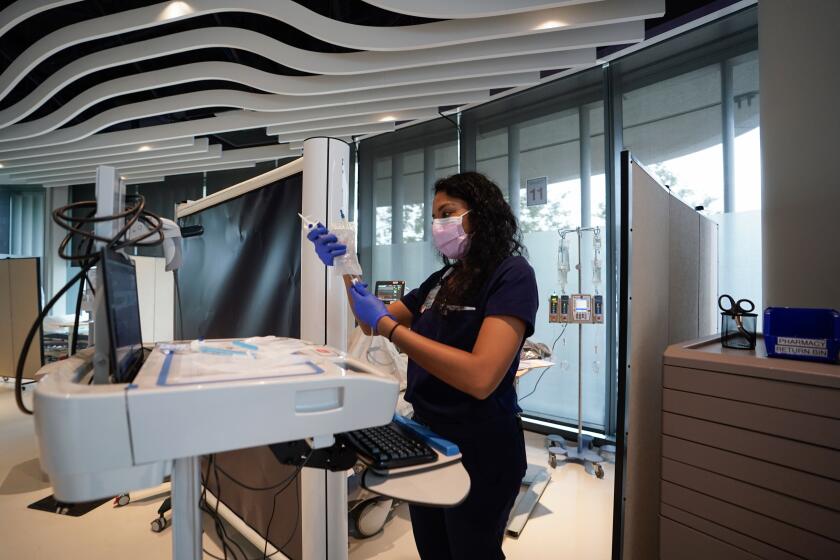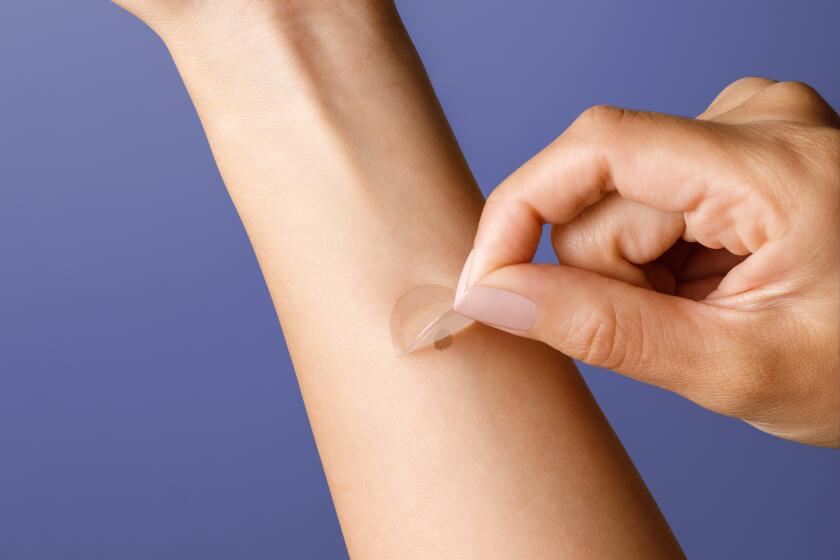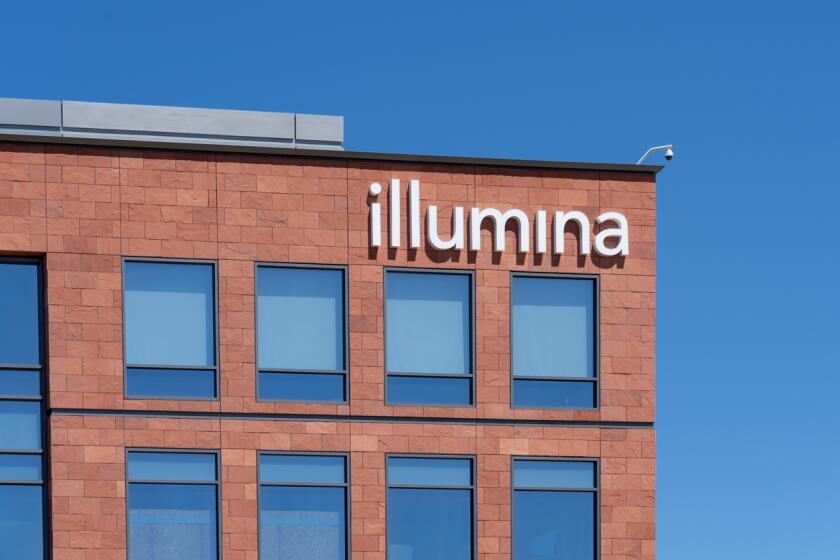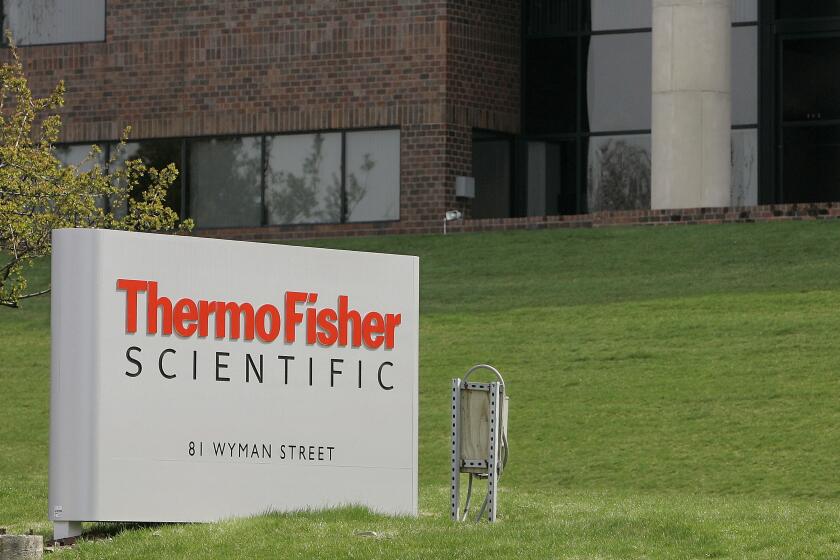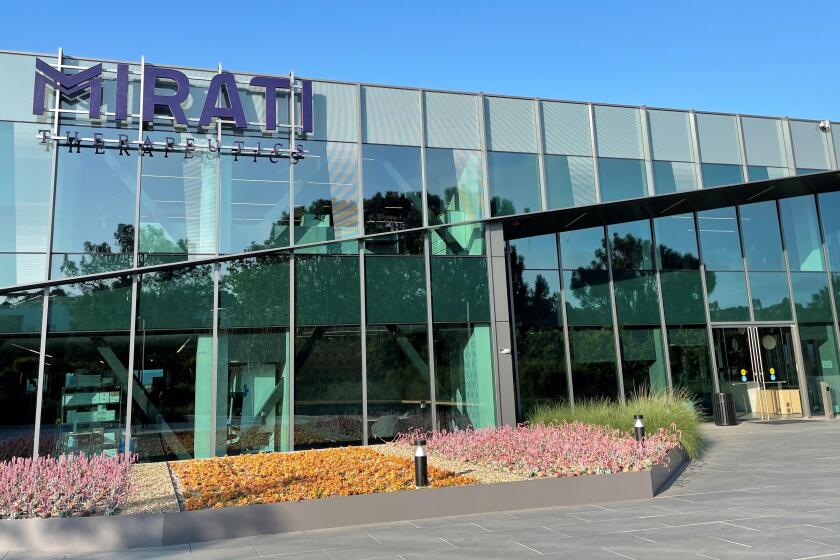Thermo Fisher linked to Ebola test
(This story has been corrected. See note at end of story).
A rapid test for Ebola using technology originally from a local company has been cleared for emergency use.
The test runs on instruments from Thermo Fisher Scientific, originally from Carlsbad-based Life Technologies. Thermo Fisher bought the company in February. The test was made by the Department of Defense, and its use was authorized this week by the U.S. Food and Drug Administration.
Results of the test, which analyzes blood samples, are available in two hours, said Dan Didier, director of public health with Life Sciences Solutions — Thermo Fisher.
In comparison, the waiting period for other methods of detecting the Ebola virus is one to two days.
The Defense Department used Thermo Fisher’s TaqMan system to make the test, Didier said.
The new test is normally conducted when Ebola symptoms appear, “but screening could begin prior to symptoms because the test is incredibly sensitive,” Didier said.
Emergency authorization by the FDA bypasses the agency’s usual approval process. It is given only amid certain crises, such as this latest outbreak of Ebola that has killed nearly 1,000 people in West Africa since March.
In a somewhat similar way, health-care authorities allowed the use of an unapproved Ebola therapy from the San Diego biotech company Mapp Biopharmaceutical for two American humanitarian workers who contracted Ebola in Liberia. That experimental therapy was given to the patients before they were transported to the United States.
Ebola is transmitted by direct contact with an infected person or that person’s bodily fluids. It hasn’t been shown to spread from person to person through the air.
The new rapid-detection test for Ebola is performed on two different variants of the Applied Biosystems 7500 series, depending on whether it’s used in the United States or abroad. These instruments are placed in certified labs. They can detect the genetic material of any virus, or indeed any organism, Didier said.
During each test, the system compares the known genetic sequence of Ebola against the test sample.
It relies on a widely used technology that makes copies of extremely small amounts of genetic material so it can be more easily detected.
The Applied Biosystems instruments offer an improved “real time” version of this technology, quantifying the genetic material while it is being amplified. This as-you-go method yields results more quickly, and it tells how much of the targeted genetic material was present in the sample, Didier said.
Researchers at Thermo Fisher, and Life Technologies before it, have worked closely for years with the U.S. Centers for Disease Control and Prevention and other public-health agencies worldwide to develop similar tests for other infectious outbreaks, Didier said.
Such collaboration for analysis of Ebola goes back about eight years.
“I think it was around 2006 (when the Defense Department) realized this could be a threat to U.S. security,” Didier said. “They built a detection kit back then. As I understand it, it’s that same kit” that has received what the FDA calls an emergency-use authorization.
In 2010, the FDA gave emergency authorization for a test designed to spot the H1N1 flu virus. That test is also run on Applied Biosystems brand instruments. Applied Biosystems is the name of a predecessor company to Life Technologies.
An indirect means of detecting Ebola that has been used for years is to analyze blood for antibodies that combat the virus.
Symptoms of an Ebola infection can also help in diagnosis; they can occur anywhere between two and 21 days after initial exposure, according to the CDC. These typically include fever, headache, joint and muscle pain, weakness, diarrhea and vomiting.
However, the difficulty of symptom-based Ebola diagnosis is that other diseases can also cause these characteristics.
Desire for faster identification of infectious microbes has risen during the past decade, with the H1N1 pandemic and outbreaks of SARS and avian flu fueling that demand, Didier said.
Beyond being able to provide prompt care to infected individuals, public-health agencies want the speedier knowledge so they can form community-wide prevention and treatment strategies more quickly and accurately.
(This story has been corrected to clarify that Thermo Fisher Scientific now sells the equipment and technology previously owned by Life Technologies, which Thermo Fisher purchased in February. It also corrects to say the purchase was concluded in February.)
Get U-T Business in your inbox on Mondays
Get ready for your week with the week’s top business stories from San Diego and California, in your inbox Monday mornings.
You may occasionally receive promotional content from the San Diego Union-Tribune.


